The ALS holds seminars regularly, both as part of our colloquium series and on an ad hoc basis. This page lists all seminars that are part of our colloquium. To receive notifications of all seminars, please email ALS-Admin@lbl.gov to request to be added to the distribution list.
ALS/Molecular Foundry Seminars
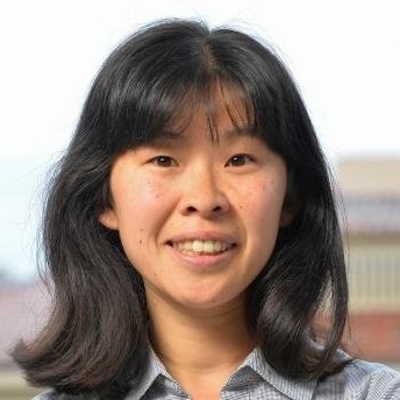  |
JUNE 17Wendy Gu, Stanford University11:00 am–12:00 pm Pacific Nanocrystals under High Pressures, and their Applications Biography Dr. Wendy Gu has been an Assistant Professor of Mechanical Engineering at Stanford University since 2017. Before this, Wendy received her MS/PhD from Caltech in 2014, and was a postdoc at UC Berkeley from 2015-2017. Her research focuses on developing lightweight architected materials, nanostructured metals and structural alloys with superior strength and toughness, including for hydrogen environments and high pressure conditions. Major techniques within the group include nano-mechanical testing and in-situ imaging using transmission and scanning electron microscopy, and synchrotron X-ray diffraction and tomography, nano-synthesis and self-assembly, and 3D printing. Wendy is the recipient of the DOE Early Career Award, the ARO Young Investigator Award, the ACS Petroleum Research Fund Doctoral New Investigator Award, and the Hellman Scholar Award. |
Past ALS/Molecular Foundry Seminars
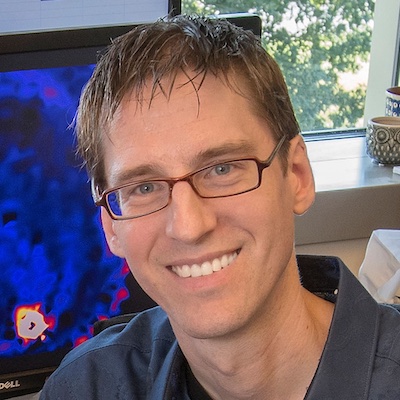 |
JANUARY 30Kevin Yager, Brookhaven National Lab11:00 am–12:00 pm Pacific Autonomous Exploration of Block Copolymer Thin Film Morphologies Biography Dr. Kevin Yager is Group Leader of the Electronic Nanomaterials group in the Center for Functional Nanomaterials at Brookhaven National Laboratory. His group studies a variety of topics, including self-assembly, hybrid materials, and quantum heterostructures. Dr. Yager obtained his Ph.D. at McGill university on studies of photo-responsive polymers. He worked at NIST on neutron scattering, and joined Brookhaven in 2010. His research program focuses on studies of self-assembling thin films, x-ray scattering measurement methods, and AI/ML for material discovery. He won the Brookhaven 2019 Science & Technology Award, and was selected as an Oppenheimer Fellow by the Department of Energy in 2020. Abstract Autonomous experimentation (AE) holds enormous promise for accelerating scientific discovery. This paradigm leverages machine-learning methods to construct experimental loops where the machine selects and conducts experiments, liberating the human scientist to focus on high-level goals and understanding. This talk will discuss progress in the development of autonomous x-ray scattering, and application to study of block copolymer (BCP) thin films. We apply these methods to study the complexity of blended and layered BCP systems, which form transient structures and non-native morphologies. Judicious choice of initial state, boundary conditions, and processing history can be used to select among competing structures. |
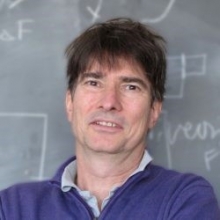 |
OCTOBER 10Peter Grutter, McGill University11:00 am–12:00 pm Pacific May the Force Be with You: Insights from Measuring Electrostatic Forces by AFM Biography Peter Grutter is chair of the Department of Physics at McGill University in Montreal. He obtained his PhD in 1989 from the University of Basel (Switzerland) and after stays at the IBM Research Centers in Almaden and Zurich joined McGill University in 1994. His group works on developing scanning probe microscopy based tools and methods and applying them to problems in nanoscience and technology as well as to neuroscience. His group has developed methods to reconnect live neurons. One of the current projects is to compare neuronal circuits made from live neurons to neuronal circuits made with semiconductors to understand their differences. |
 |
APRIL 25Mark Allendorf, Sandia National Laboratory11:00 am–12:00 pm Pacific From Nano to Macro and Back Again: Disruptive Science for Materials-Based Hydrogen Storage Biography Dr. Mark D. Allendorf is Co-Director of the DOE Hydrogen Materials – Advanced Research Consortium (HyMARC) and a Senior Scientist at Sandia National Laboratories in Livermore, California. He holds an A.B. in chemistry (Magna Cum Laude) from Washington University in St. Louis and a Ph.D. in inorganic chemistry from Stanford University. At Sandia, he conducts research in two primary areas: 1) fundamental science and applications of metal-organic frameworks (MOFs) and 2) on materials for hydrogen storage. Current interests include nanoscale metal hydrides; nanoconfinement effects; metastable materials; gas storage; hydrogen carriers; MOFs for electronic devices, chemical sensing, and radiation detection. His research has generated more than 200 journal articles and proceedings papers, as well as thirteen patents. He is Past President and Fellow of The Electrochemical Society and has received Sandia awards for research, leadership, and teamwork, as well as a 2014 R&D100 Award for a novel approach to radiation detection. |
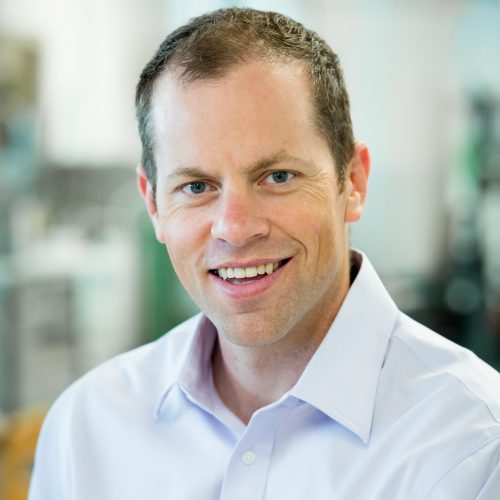 |
JANUARY 31Curtis Berlinguette, University of British Columbia11:00 am–12:00 pm Pacific Reactive Carbon Capture Biography Curtis Berlinguette leads a large, interdisciplinary team designing and building electrochemical reactors to power the planet. Dr. Berlinguette is a Distinguished University Scholar at the University of British Columbia, where he is a Professor of Chemistry and Chemical & Biological Engineering. He is also a Fellow of the Royal Society of Canada, CIFAR Program Director, and Principal Investigator at the Stewart Blusson Quantum Matter Institute (SBQMI). His academic group has advanced a range of clean energy applications including CO2 utilization, membrane reactors for decarbonizing the chemicals industry, and low-temperature fusion. His team has also pioneered the use of flexible automation and machine learning to build self-driving labs for materials. Dr. Berlinguette has been recognized with several awards, including an Alfred P. Sloan Research Fellowship and an NSERC E.W.R. Steacie Memorial Fellowship. |
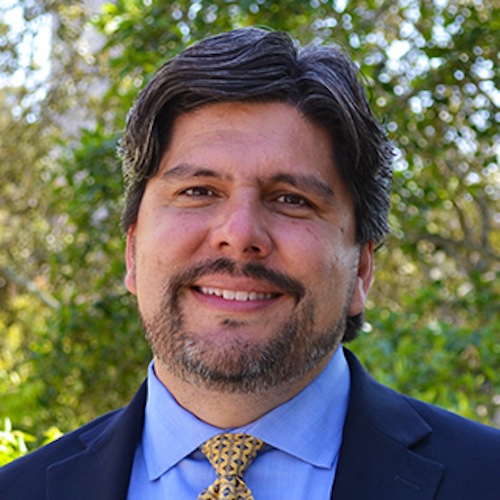 |
OCTOBER 11Oscar Dubon, UC Berkeley/Berkeley Lab11:00 am–12:00 pm Pacific Diversity, Belonging & Institutional Culture: Turning Intentions into Actions Biography Oscar Dubon, Jr. is a Professor in the Department of Materials Science & Engineering at U.C. Berkeley and Faculty Scientist at the Lawrence Berkeley National Laboratory. Professor Dubon serves as the Associate Dean for Equity and Inclusion in the College of Engineering at U.C. Berkeley. He received a B.S. from UCLA (1989) and M.S. (1992) and Ph.D. (1996) from U.C. Berkeley. After postdoctoral positions at U.C. Berkeley and Harvard University, he joined the U.C. Berkeley faculty in 2000. He is the recipient of the 2000 Robert Lansing Hardy Award from the Minerals, Metals & Materials Society, a 2004 CAREER Award from the National Science Foundation, and the 2004 Presidential Early Career Award for Scientists and Engineers (PECASE). |
Past ALS Special Seminar
 |
OCTOBER 12Michael E. Flatté, University of Iowa 2:00–3:00 pm Pacific Coherent Magnonics for Quantum Information Science Abstract The current revolution in quantum technologies relies on coherently linking quantum objects like quantum bits (“qubits”). Coherent magnonic excitations of low-loss magnetic materials can wire together these qubits for sensing, memory, and computing. Coherent magnonics may reduce the size of superconducting qubits (which otherwise struggle with the large scale of microwave excitations) and may increase the size of spin-based qubit networks (which otherwise contend with the very short distances of dipolar or exchange interactions). Compared to photonic devices, these magnonic devices require minimal energy and space. However, efforts to exploit coherent magnonic systems for quantum information science will require a new understanding of the linewidths of low-loss magnonic materials shaped into novel structures and operating at dilution-refrigerator temperatures. This lecture will introduce the fundamental requirements for practically linking quantum objects into large-scale coherent quantum systems as well as the advantages of coherent magnonics for next- [2] D. R. Candido, G. D. Fuchs, E. Johnston-Halperin, and M. E. Flatté, “Predicted strong coupling of solid-state spins via a single magnon mode,” Mater. Quantum Technol., vol. 1, Dec. 2021, Art. no. 011001. [3] Ö. O. Soykal and M. E. Flatté, “Strong field interactions between a nanomagnet and a photonic cavity,” Phys. Rev. Lett., vol. 104, Feb. 2010, Art. no. 077202. [4] T. Liu, X. Zhang, H. X. Tang, and M. E. Flatté, “Optomagnonics in magnetic solids,” Phys. Rev. B, Condens. Matter, vol. 94, Aug. 2016, Art. no. 060405(R). Biography Michael E. Flatté (Member, IEEE) received the A.B. degree in physics from Harvard University, Cambridge, |
Spring 2022 Colloquium Series
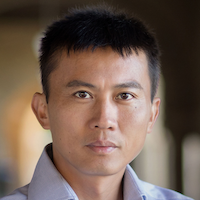
|
MAY 4Yi Cui, Stanford3:00–4:00 pm Pacific Reinventing Batteries through Nanoscience Abstract The fast growth of portable power sources for transportation and grid-scale stationary storage presents great opportunities for new battery chemistries. How to increase energy density, reduce cost, speed up charging, extend life, enhance safety and reuse/recycle are critical challenges. Here I will present how we utilize nanoscience to reinvent batteries and address many of challenges by understanding the materials and interfaces through new tools and providing new materials guiding principles. The topics to be discussed include: 1) A breakthrough tool of cryogenic electron microscopy, leading to atomic scale resolution of fragile battery materials and interfaces. 2) Materials design to enable high capacity materials: Si and Li metal anodes and S cathodes. 3) Interfacial design with polymer and inorganic coating to enhance cycling efficiency of battery electrodes. 4) New electrolyte design. 5) New battery chemistry for grid scale storage. Biography At Stanford University, Yi Cui is the director of the Precourt Institute for Energy, co-director of the StorageX Initiative, Fortinet Founders Professor Engineering in the Department of Materials Science and Engineering. He is currently a Somorjai Miller Visiting Professor at University of California, Berkeley. A cleantech pioneer and entrepreneur, Cui earned his bachelor’s degree in chemistry in 1998 from the University of Science & Technology of China and his PhD in chemistry from Harvard University in 2002. He was a Miller Postdoctoral Fellow at the University of California, Berkeley from 2002 to 2005 before joining the Stanford faculty. He has founded five companies to commercialize the energy and environment technologies from his lab: Amprius, 4C Air, EEnotech, EnerVenue and LifeLab Design Inc. Cui has published more than 500 studies and is one of the world’s most cited scientists. He is an elected fellow of the American Association for the Advancement of Science, the Materials Research Society, the Electrochemical Society and the Royal Society of Chemistry. He is an executive editor of Nano Letters and co-director of the Battery 500 Consortium, co-director of Bay Area Photovoltaic Consortium. His selected awards include Global Energy Prize (2021), DoE Lawrence Award (2021), Materials Research Society Medal (2020), Electro Chemical Society Battery Technology Award (2019), Nano Today Award (2019), Blavatnik National Laureate (2017), and the Sloan Research Fellowship (2010). |
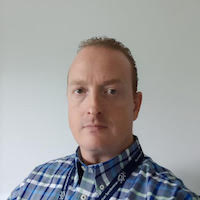
|
MAY 11 **note: special time**Cameron Kewish, Australian Synchrotron4:00–5:00 pm Pacific High Speed Free-Run Ptychography at the Australian Synchrotron Abstract The Australian Synchrotron X-ray Fluorescence Microscopy (XFM) beamline has recently implemented fast-scanning ptychography, a scanning X-ray diffraction microscopy method. Ptychography creates super-resolution images from transmitted microdiffraction patterns acquired as the sample is scanned through the beam. High-speed detectors and high-performance computers are required to iteratively reconstruct these complex images. The experimental methods and reconstruction algorithms have significantly evolved over the last decade and a half into a mature and user-friendly complementary imaging method to XFM. The implementation of high speed ptychography at the XFM beamline will be discussed. It includes a free-run data collection mode where detector dead time is eliminated, and the scan time is optimized. Free-run data collection is viable for fast and high-quality ptychography by demonstrating extremely high data rate acquisition covering areas up to 352,000 µm² at up to 140 µm²/s, with 13x spatial resolution enhancement compared to the beam size. With these improvements, ptychography at velocities up to 250 µm/s is approaching speeds compatible with fast-scanning X-ray fluorescence microscopy. The combination of these methods provides morphological context for elemental and chemical information, enabling unique scientific outcomes. A brief overview will be given of the new Nanoprobe beamline, under construction as part of the ANSTO BRIGHT program. The Nanoprobe will implement fast-scanning ptychography in parallel with XFM, XANES mapping and other hard X-ray nanobeam methods. Biography Cameron Kewish is a beamline scientist working on the design of the BRIGHT Nanoprobe at the ANSTO Australian Synchrotron since 2020. Cameron obtained his PhD in X-ray Diffraction and Refraction Tomography from Monash University in 2004, conducting experiments at the Australian National Beamline Facility at the Photon Factory (Japan). Following postdoctoral fellowships at the Advanced Photon Source (USA) and the Swiss Light Source (Switzerland), he was a beamline scientist involved in the design and construction of the Nanoscopium beamline at synchrotron Soleil (France). Cameron returned to Australia in 2017 to take up a fellowship with La Trobe University seconded to the Australian synchrotron XFM beamline. There he implemented fast-scanning ptychography, a super-resolution imaging method that provides nanoscale morphology context for the X-ray fluorescence images. Expertise: |
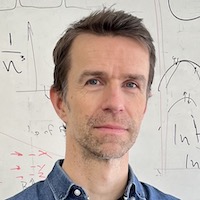 |
MAY 17 **special time: ALS/Foundry Joint Seminar**Bernhard Urbaszek, CNRS11:00 am–12:00 pm Pacific Engineering the Optical Properties of Layered Semiconductors Abstract Layered materials such as the transition metal dichalcogenides (TMD) MoS2 and WSe2 show strong and tunable light absorption and very surprising non-linear optical properties such as strong second harmonic generation. In this seminar we show several approaches that allow tuning of the optical properties in atomically thin devices based on our knowledge of the fundamental optical transitions governed by excitons (electron-hole-pairs). We show tuning of the second harmonic generation efficiency in TMD homo- and heterobilayers by several orders of magnitude, mediated by interlayer excitons and layer hybridization [1][2]. Tuning optical properties is also possible staying in the monolayer limit if innovative growth processes are used. Here we show new results on Janus monolayer structures SeMoS with different top and bottom chalcogen atoms. We also show exciton spectroscopy and exciton diffusion in hBN encapsulated MoSe2-WSe2 lateral monolayer heterostructures grown by chemical vapor deposition. This work is based on many fruitful collaborations with partners such as the NIMS Tsukuba, FSU Jena, University of Basel and the Ioffe Institue St. Petersburg.
Biography Bernhard Urbaszek is a Director of Research at CNRS. He has co-authored more than 120 papers in international journals and is teaching Solid State Physics, Optoelectronics and Quantum Mechanics at INSA Toulouse. He is the principal investigator of the ERC project OptoDNPcontrol (2013-2018) and coordinator of ANR projects (2D-van-der-Waals–Spin) and Marie Curie ITN nodes (SpinNano; 4Photon). |
 |
MAY 18Tanja Bosak, MIT3:00–4:00 pm Pacific Experimental Insights into the Origin of Gases and Sedimentary Structures in Martian Lacustrine Sediments Biography Tanja Bosak was born in Croatia and graduated from the Zagreb University with a degree in Geophysics. After a summer of research at JPL, she moved to the California Institute of Technology in Pasadena, where she studied signatures of microbial processes in ancient sedimentary rocks and earned a Ph.D. in Geobiology. She spent two years at Harvard as a Microbial Initiative Postdoctoral Fellow, joined the Department of Earth, Atmospheric and Planetary Sciences at MIT in 2007 and is now a Professor of Geobiology and the group leader of the Program in Geology, Geochemistry and Geobiology. |
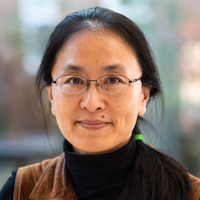
|
JUNE 1Wen-lu Zhu, University of Maryland3:00–4:00 pm Pacific Abstract The rate and extent of serpentinization and carbonation of ultramafic rocks are a subject of debate. On the one hand, the products from these volume expansion reactions may fill existing pore space and passivate reactive surfaces, preventing the reactions to complete. On the other hand, the increase of solid volume may generate enough stress to fracture the host rock, which provides positive chemical-mechanical feedback to maintain reaction by adding new fluid pathways and exposing unreacted surface. Realistic assessments of the efficiency of geological carbon sequestration require better understanding of the mechanics of reaction-induced fracturing. We conducted dynamic microtomography experiments to investigate the effects of confinement and pore fluid pressure on hydration of periclase MgO to brucite Mg(OH)2 at subsurface conditions. In the first suite of experiments, we quantified the control of reaction-induced fracturing over the rate of periclase to brucite transition. At temperatures of 180-200°C, we observed that reaction-induced fracturing took place only when effective confinements is less that 30MPa. Below this threshold, the hydration of periclase led to reaction-induced fracturing and the brucite-for-periclase replacement was able to proceed to completion within a few hours. Above 30MPa, the periclase to brucite transition caused a porosity reduction and the reaction became self-limited. The dependence of reaction-induced fracturing on effective confining pressure is intriguing. Several mechanisms for the observed threshold, including disjoining pressure and ductile creep, are discussed. In the second suite of experiments, we studied how the fracking serpentine rocks via hydration reactions. A periclase rod was inserted into a central hole of a serpentinite sample. We found that the expansion of the periclase/brucite composite against the surrounding serpentinite exerted sufficient normal stress to nucleate fractures at the inner wall of the serpentinite. Using time-resolved three-dimensional imaging, we quantified the spatial and temporal distribution of the reaction-induced fractures. Our results show that the reaction-induced fractures developed a hierarchical fracturing pattern, similar to that observed in serpentinized mantle rocks. With increasing pore fluid pressure, the fracture spacing decreases and the number of fractures increases. These experimental results have important implications in understanding microseismicity in the serpentinization of oceanic crust. Biography Wen-lu Zhu, Professor, Department of Geology, University of Maryland. Wen-lu received her PhD in Stony Brook University. She worked at the Woods Hole Oceanographic Institution before moving to the University of Maryland. Wen-lu’s research focuses on the coupling between rock deformation and fluid flow in Earth’s crust and mantle. She measures the evolution of mechanical and transport properties and quantifies the change of the 3-D rock structure at various scales. She was the recipient of the 2020 Louis Néel Medal by the European Geosciences Union for her contributions to understanding coupling between fluids and rock deformation. |
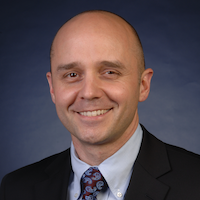 |
JUNE 8Dean DeLongchamp, National Institute of Standards and Technology3:00–4:00 pm Pacific Polarized Resonant Soft X-Ray Scattering for Nanoscale Molecular Orientation Measurements in Soft Materials Abstract Orientation and conformation in nanoscale amorphous regions often dominate the properties of soft materials. Robust correlations between structure in these amorphous regions and important properties are not well developed due to a lack of measurements with high spatial resolution and a sensitivity to molecular orientation. I will describe our approach to solving this issue using polarized resonant soft X-ray scattering (P-RSoXS), which combines principles of soft X-ray spectroscopy, small-angle scattering, and data fusion with real-space imaging to produce a molecular scale structure measurement for soft materials. I will focus on recent results from polarized resonant soft X-ray scattering (P-RSoXS) measurements of semicrystalline polymers, nanocomposites, and block copolymers. Our analysis approach extracts molecular orientation details with a spatial resolution of ≈ 2 nm or smaller. This work is now accelerated by a powerful software code base using parallel computation across graphics processing units (GPUs) for the forward-simulation of P-RSoXS patterns. Our approaches now include data fusion with real space measurements such as atomic force microscopy and transmission electron microscopy, as well as direct fitting of experimental P-RSoXS data with simulation results, enabling the extraction of quantitative nanoscale orientation landscapes describing never-before-measured radial chain orientation distributions near interfaces in glassy regions of polymer-grafted nanocomposites and block copolymers. These new P- RSoXS capabilities show great promise for informing and guiding the processing and synthetic design of soft materials. Biography Dean M. DeLongchamp leads the Polymer Processing Group at the National Institute of Standards and Technology, which develops measurement methods, data, standards, and science for the processing and manufacturing of materials into functional forms that include thin films, nanostructures, and shaped bulk solids. His group provides expertise in in situ processing measurements, structure and order evolution, nanofabrication, polymer phase behavior, and polymer dynamics needed to improve the performance of materials in application areas such as energy and electronics. Dean’s scientific portfolio includes a specialization in flexible organic electronics, as well as soft X-ray spectroscopy and scattering, powerful synchrotron-based tools that measure the composition and molecular orientation of organic systems. |
 |
JUNE 15Joseph Koo, UT Austin3:00–4:00 pm Pacific Ablation: From the Laboratory to Space Reentry The Koo Research Group (KRG) at UT Austin specializes in “Ablation research” for more than fifteen years. Recently, the group has developed some incredibly unique capabilities that can advance “Ablation research” using both experimental and numerical approach. The purpose of today’s lecture at LBL/ALS is to introduce the methodology KRG has developed to solve this challenging problem. Past and current sponsors relating to our research include DoD (AAM, ACCDC, AFOSR, AFRL, AFC, AMDEC, AvMC, CMD, DTRA, MDA, NAVAIR, NAVSEA, NSWC, & ONR), DoE, DoT, EPA, FAA, NASA, NSF, and private companies. Today’s lecture includes the following topics: Dr. Koo possesses over 40 years of industrial and academic experience in program and engineering management. Currently, he is Research Professor and Director of Polymer Nanocomposites Technology Lab in the Walker Department of Mechanical Engineering at The University of Texas at Austin, Austin, TX. He is the founder of KAI and currently served as Vice President and CTO. Dr. Koo is Fellow of SAMPE, IAAM, & VEBLEO. He is an Associate Fellow of AIAA and past-chair of the AIAA Materials Technical Committee. He serves as associate editor and advisory board member of several international journals and societies. He specializes in polymer nanocomposites: processing, characterization, and applications, such as ablatives for thermal protection systems and solid rocket motors, flame retardant polymers for additive manufacturing, fire resistant nonwoven and woven fabrics, thermally conductive polymer matrix composites, sensors to measure in situ ablation recession/thermal properties, sensors to measure char strength, modeling of polymer degradation, material response ablation modeling, and hypersonic flow field modeling. Dr. Koo’s publications include four textbooks and over 670 papers/presentations in materials, thermal and optical science disciplines. A new book, “Ablation Science and Technology” published by Cambridge University Press, Cambridge, UK is forthcoming in late 2022. |
Winter 2022 Colloquium Series

|
JANUARY 12Elspeth Garman, Oxford University10:00–11:00 am Pacific Estimating Doses for Synchrotron Experiments: Why and How Abstract In synchrotron macromolecular and small molecule crystallography, SAXS, and protein footprinting experiments, the effects of radiation damage to the sample during the measurement can adversely affect the integrity of the results. The fundamental metric against which indicators of radiation damage are plotted is the dose, the energy absorbed per unit mass of the sample. The dose can be estimated from knowledge of the beam characteristics (energy, flux, size, intensity profile) and the atomic contents of the sample (and solvent composition), which allows the amount of x-ray absorption to be calculated. Once the dose has been estimated, data collection conditions can be adjusted to ensure that the results will not be compromised by radiation damage. The program RADDOSE permitted the dose to be computed, but was not designed to take into account the rotation of the sample in the beam, since it was instigated when beams were usually larger than most crystals. The code reported the maximum dose absorbed, which was usually at the centre of the sample if a beam with a Gaussian profile was being used. This dose could be much larger than the average dose absorbed by the irradiated volume of the crystal. To address these issues, we have written software for temporally and spatially resolved modelling of absorbed dose [1], RADDOSE-3D [www.raddo.se] for particular data strategies. We also introduced and validated a new dose metric, Diffraction Weighted Dose, DWD [2], which combines information from the aggregation of dose within each volume element of the crystal up to a given time, with the way the crystal is being exposed at that moment. The resulting dose value is lower than the maximum dose experienced by localised volumes of the crystal, but DWD more realistically represents the damage state of the crystal during the experiment. However, it is still not ideal, a fact that will be discussed in this talk. Further developments to RADDOSE-3D have been implemented to make it appropriate for estimating doses absorbed in small molecule crystallography [3] and SAXS [4] experiments, as well as by micro and nano-crystals [7] now used at synchrotrons and XFELS [6]. The code takes into account the energy carried away by photoelectrons which escape from these small crystals as well as that entering from irradiated solvent around them. Very recently we have written a GUI to allow RADDOSE-3D to be used conveniently by experimenters at synchrotron beamlines. References: [1] O. B Zeldin, M. Gerstel & E.F. Garman (2013) Optimising the spatial distribution of dose in X-ray macromolecular crystallography. J. Synchrotron Radiation 20, 49–57 [2] O. B. Zeldin, S. Brockhauser, J. Bremridge, J. Holton & E.F. Garman (2013) Predicting the X-ray lifetime of protein crystals. PNAS 110, 20551-20556 [3] J. Christensen, P.N. Horton, C.S. Bury, J.L. Dickerson, H. Taberman, E.F. Garman*, & S.J. Coles* (2019) Radiation damage in small molecule crystallography: fact not fiction IUCrJ 6, 703–713 [4] J.C. Brooks-Bartlett, R.A. Batters, C.S. Bury, E.D. Lowe, H.M. Ginn, A. Round & E.F. Garman. (2017) Development of tools to automate quantitative analysis of radiation damage in SAXS experiments. J. Synchrotron Radiation 24, 63–72 [5] J.L. Dickerson &E.F. Garman. (2021) Doses for experiments with microbeams and microcrystals :Monte Carlo simulations in RADDOSE-3D. Protein Science. 30, 8–19 [6] J.L. Dickerson, P.T.N. McCubbin & E.F. Garman (2020) RADDOSE-XFEL : femtosecond time-resolved dose estimates for macromolecular X-ray free-electron laser experiments. J. Appl. Cryst. 53, 549–560 Biography Elspeth Garman started her working life aged 18 as a volunteer teacher in Swaziland, Southern Africa. Following a degree in Physics at Durham University, she did a D.Phil (PhD) in Experimental Nuclear Structure Physics at Oxford University. After seven years as a Nuclear Physics Research Officer and Physics Tutor, she changed fields to protein crystallography. Her main research interests are in improving methods for structural biology, including establishing cryocooling protocols and metrics for assessing radiation damage in x-ray crystallography as well as applying proton-induced x-ray emission (PIXE) techniques to unambiguously identify metals in proteins. She was President of the British Crystallographic Association from 2009–2012 and Director of the Life Sciences Interface and then Systems Biology EPSRC Doctoral Training Centres at Oxford from 2009–2014, was awarded the European Crystallographic Association’s Max Perutz Prize in 2019, and is Professor of Molecular Biophysics at Oxford University. |
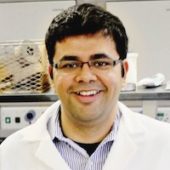
|
JANUARY 26Sarbajit Banerjee, Texas A&M3:00–4:00 pm Pacific Designing Electrode Architectures across Length Scales: Some Lessons Learned from Li-ion and “Beyond Li” Chemistries Abstract The design and operation of rechargeable batteries is predicated on orchestrating flows of mass, charge, and energy across multiple interfaces. Understanding such flows requires knowledge of atomistic and mesoscale diffusion pathways and the coupling of ion transport with electron conduction. Using multiple polymorphs of V2O5 as model systems, I will discuss our efforts to develop an Angstrom-level view of diffusion pathways using a combination of single-crystal X-ray diffraction and density functional theory calculations. Scanning transmission X-ray microscopy and ptychography imaging provides a means of mapping the accumulative results of atomic scale inhomogeneities at mesoscale dimensions and further enables tracing of stress gradients across individual particles. I will discuss mitigation of diffusion impediments with reference to two distinct approaches: (a) utilization of Riemann manifolds as a geometric design principle for electrode architectures and (b) the atomistic design of polymorphs with well-defined diffusion pathways that provide frustrated coordination. The latter approach, involving navigating metastable phase space, holds opportunities for non-equilibrium structural motifs and distinctive chemical bonding and ultimately for the realization of novel function. Using binary, ternary, and quaternary oxides of vanadium, as illustrative examples where topochemical synthetic strategies have unveiled novel polymorphs, I will highlight the tunability of electronic structure, the potential richness of energy landscapes, and the implications for discovering promising intercalation hosts for both multivalent and anion batteries. Biography Sarbajit Banerjee is the Davidson Chair Professor of Chemistry, Professor of Materials Science & Engineering, and Chancellor EDGES Fellow at Texas A&M University. He was awarded a National Science Foundation CAREER award in 2009; the American Chemical Society ExxonMobil Solid-State-Chemistry Fellowship in 2010; the Cottrell Scholar Award in 2011; the Minerals, Metals, and Materials Society Young Leader Award in 2013; the American Chemical Society Journal of Physical Chemistry Lectureship in 2013; the Scialog Innovation Fellowship in 2013; the IOM3 Rosenhain Medal and Prize in 2015; and the Royal Society of Chemistry/IOM3 Beilby Medal in 2016. In 2012, MIT Technology Review named Sarbajit to its global list of “Top 35 innovators under the age of 35” for the discovery of dynamically switchable smart window technologies that promise a dramatic reduction in the energy footprint of buildings. He was named a NASA NIAC Fellow in 2021 and has received two Special Creativity Awards from the National Science Foundation (2020 and 2021). He was awarded the 2018 Robert S. Hyer Graduate Student Mentor Award by the Texas Section of the American Physical Society and is the 2021 recipient of the Stanley C. Israel Regional Award for Advancing Diversity in the Chemical Sciences from the American Chemical Society. He serves as Senior Editor of ACS Omega and is a Fellow of the Royal Society of Chemistry and the Institute of Physics. |
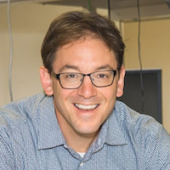 |
FEBRUARY 9Aaron Lindenberg, Stanford and SLAC National Accelerator Laboratory3:00–4:00 pm Pacific Ultrafast Probes of Nanoscale Heterogeneous Dynamics Abstract Whereas it is fairly straightforward using current ultrafast x-ray and electron scattering techniques to capture coherent atomic-scale dynamics at the unit cell level via crystallographic approaches, the dynamic disorder, heterogeneity, and fluctuations that occur during materials switching events remain largely mysterious. Here I will describe recent efforts to probe such dynamic atomic-scale responses using two examples: In the hybrid perovskites I will show how transient diffuse scattering approaches enable a new understanding of local nanoscale polaronic distortions and the fundamental processes that accompany absorption of a photon. I will also describe recent efforts using single-shot pump-probe x-ray photon correlation spectroscopy to visualize fundamental nucleation processes during the formation of a new light-induced metastable structure. Biography Aaron M. Lindenberg is an Associate Professor at Stanford University with joint appointments in the Department of Materials Science and Engineering and the Department of Photon Science. He received his B.A. from Columbia University in 1996 and his Ph.D. in Physics from the University of California, Berkeley in 2001. He was a Faculty Fellow at Berkeley from 2001-2003 and then a staff scientist at the SLAC National Accelerator Laboratory from 2003-2007. He is a winner of the DARPA Young Faculty Award, the Department of Energy Outstanding Mentor Award, the Alfred Moritz Michaelis Prize, and was named a Terman Fellow and a Chambers Faculty Scholar at Stanford and an I.I. Rabi Scholar at Columbia. |
 |
FEBRUARY 23Nitash Balsara, UC Berkeley and Berkeley Lab3:00–4:00 pm Pacific Polymer-Based Lithium Battery Electrolytes and the Pesko Condition Abstract The need for creating safe electrolytes for lithium batteries is significant given the continued safety problems associated with current lithium-ion batteries. Non Flammable polymer electrolytes offer a possible solution but the rate of lithium ion transport is too low for practical applications. In this talk, I will discuss some of the fundamental factors that limit ion transport in polymers. A crucial ingredient in the analysis is a “condition” that my PhD student Danielle Pesko arrived at; I call this the Pesko condition. I will discuss the relevance of this condition on ion transport in polymer electrolytes. Included in the discussion are both homogeneous and nanostructured polymer electrolytes. The responsive nature of nanostructured electrolytes in batteries will be discussed.
Biography Nitash P. Balsara is a chemical engineer with a bachelor’s degree from the Indian Institute of Technology in Kanpur, India in 1982. His graduate education began with a master’s degree from Clarkson University. This was followed by PhD from RPI. After 2 post-docs at the University of Minnesota and Exxon, he joined the faculty of Department of Chemical Engineering at Polytechnic University in Brooklyn. In 2000 he accepted the job that he currently holds: a joint appointment as professor of Chemical Engineering at the University of California, Berkeley and faculty scientist at Lawrence Berkeley National Laboratory. He has managed to hang on to both jobs. Along with his students and collaborators, he cofounded two battery start-ups, Seeo, Inc., and Blue Current. |

|
MARCH 9Charlie Bouman, Purdue University3:00–4:00 pm Pacific Emerging Algorithms for CT Imaging of Dynamic Objects After over 40 years, computed tomography is continuing to have a huge impact in scientific, industrial, and medical applications. As scientific researchers push the boundaries of temporal and spatial CT resolution, new reconstruction techniques are required which can produce high image quality with ever more limited data. This talk presents a number of emerging methods in CT imaging that combine specialized acquisition methods with novel reconstruction algorithms to push the technology well beyond traditional limits for the imaging of time-varying objects. In the first application, we present a method for CT reconstruction from ultrasperse view data and show how it can be used to image with nanosecond temporal resolution. Second, we describe a method, called CodEx, that can produce high temporal resolution reconstructions from blurred on-the-fly measurements by imposing a temporal signal code during the acquisition process. Finally, we present a method called multi-slice fusion (MSF) that combines the sensor forward model with a deep neural net prior to produce high quality 4D reconstructions from sparse data. Charles A. Bouman is the Showalter Professor of Electrical and Computer Engineering and Biomedical Engineering at Purdue University. He received his B.S.E.E. degree from the University of Pennsylvania, M.S. degree from the University of California at Berkeley, and Ph.D. from Princeton University in 1989. He is a member of the National Academy of Inventors, a Fellow of the IEEE, AIMBE, IS&T, and SPIE. He is the recipient of the 2021 IEEE Signal Processing Society, Claude Shannon-Harry Nyquist Technical Achievement Award, the 2014 Electronic Imaging Scientist of the Year award, and the IS&T’s Raymond C. Bowman Award; and in 2020, his paper on Plug-and-Play Priors won the SIAM Imaging Science Best Paper Prize. He has served as the IEEE Signal Processing Society’s Vice President of Technical Directions, Editor-in-Chief of the IEEE Transactions on Image Processing, Vice President of Publications for the IS&T Society, and he led the creation of the IEEE Transactions on Computational Imaging. |
 |
APRIL 13Aashish Manglik, UCSF3:00–4:00 pm Pacific Molecular Puzzles in G Protein-Coupled Receptor Signaling Biography Aashish was an undergraduate at Washington University in St. Louis, where he worked in the lab of Jeff McKinney on Salmonella-host interactions. He moved to California in 2008 to join the Stanford Medical Scientist Training Program. There, he worked with Brian Kobilka as a graduate student to elucidate different aspects of GPCR function, resulting in a number of important contributions to our current understanding of opioid and adrenergic receptors. After finishing his medical training in May 2016, Aashish began his independent research career as the first Stanford Distinguished Fellow at Stanford University School of Medicine within the Department of Molecular and Cellular Physiology. He subsequently began as an assistant professor at UCSF in fall of 2017. |
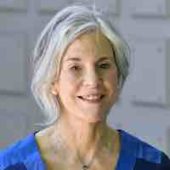 |
APRIL 27Marie D. Jackson, University of Utah3:00–4:00 pm Pacific Reactive Volcanic Tephra and Cementing Processes: From Young Surtsey Tuff to Ancient Roman Concrete The extreme durability of ancient Roman concretes derives from the dynamic behavior over two milennia of mortars fabricated with lime and alkali-rich volcanic tephra. Our experiments at Advanced Light Source Beamline 12.3.2 investigate ancient mortars that bind a self-reinforcing framework of coarse rock and brick aggregate in the concretes of architectural monuments in Rome and marine harbors in the Mediterranean region. Understanding the reaction pathways that have produced the cementitious systems in these mortars and how these evolve over time requires an explicit knowledge of the assemblages of mineral cements in the highly heterogeneous fabrics of the ancient materials. I will describe how powder X-Ray microdiffraction (µXRD) and X-ray microfluorescence (µXRF) experiments at Beamline 12.3.2 and data processing with XMAS software have provided the analytical foundation for describing the mineral cements of intact Roman mortar specimens and basalt specimens from Surtsey volcano, Iceland, the very young geologic analog of the ancient marine concrete. BL 12.3.2 provides a means of precisely mapping variations in the assemblages and crystallographic structures of mineral cements at the micrometer scale while also recording the structure of nanocrystalline phases and their texture, or lattice preferred orientations. The µXRD studies have revealed processes of zeolite (phillipsite) dissolution to produce pozzolanic and post-pozzolanic Al-tobermorite crystals in the ancient seawater concrete, reorganization of calcium-aluminum-silicate-hydrate (C-A-S-H) binder to form a robust nanocrystalline phase with texture in the ancient architectural concrete, and production of authigenic texture in nanocrystalline clay mineral (nontronite) that records biomeditated alteration of basaltic tephra in seawater at Surtsey volcano. The analytical capabilities at BL 12.3.2 could also be instrumental in describing the initiation of cementitious phases in reproductions of the ancient mortars with reactive aggregates produced from recycled glass — thus providing instructive guideposts for applications of Roman geotechnical principles in modern, environmentally-friendly concrete infrastructure. Marie Jackson is a Research Associate Professor in the Department of Geology and Geophysics at University of Utah. Her recent research has focused on the material and mineralogical characteristics of ancient Roman architectural concretes in Rome and marine concretes from harbors in the central and eastern Mediterranean region acquired by the ROMACONS drilling program. She is Principal Investigator of the SUSTAIN drilling project at Surtsey volcano, Iceland, sponsored by the International Scientific Continental Drilling Program. She is also Principal Investigator of a Department of Energy ARPA-E project that explores self-sustaining cementitious systems in reproductions of Roman concretes with reactive glass aggregates. Jackson received a Doctorat d’Université from the Université de Nantes in France and a Ph.D. from Johns Hopkins University in Earth Sciences. She is a fellow of the American Ceramic Society. |
ALS/Molecular Foundry Seminar
 |
FEBRUARY 22Karthish Manthiram, Caltech11:00 am–12:oo pm Pacific Electrification and Decarbonization of Chemical Synthesis Abstract Chemical synthesis is responsible for significant emissions of carbon dioxide worldwide. These emissions arise not only due to the energy requirements of chemical synthesis, but since hydrocarbon feedstocks can be overoxidized or used as hydrogen sources. Using renewable electricity to drive chemical synthesis may provide a route to overcoming these challenges, enabling synthetic routes which operate at benign conditions and utilize sustainable inputs. We are developing an electrosynthetic toolkit in which distributed feedstocks, including carbon dioxide, dinitrogen, water, and renewable electricity, can be converted into diverse fuels, chemicals, and materials. In this presentation, we will first share recent advances made in our laboratory on nitrogen fixation to synthesize ammonia at ambient conditions. Specifically, our lab has investigated a continuous lithium-mediated approach to ammonia synthesis and understood the reaction network that controls selectivity. We have developed non-aqueous gas-diffusion electrodes which lead to high rates of ammonia synthesis at ambient conditions. Then, we will discuss how water can be used as a sustainable oxygen-atom source and how carbon dioxide can be used to achieve carbon chain extension. These findings will be discussed in the context of a broader range of electrosynthetic transformations which could lead to local and on-demand production of critical chemicals and materials. Biography Karthish Manthiram is a Professor of Chemistry and Chemical Engineering at Caltech. The Manthiram Lab is focused on the molecular engineering of electrocatalysts for the synthesis of organic molecules, including pharmaceuticals, fuels, and commodity chemicals, using renewable feedstocks. Karthish received his bachelor’s degree in Chemical Engineering from Stanford University in 2010 and his Ph.D. in Chemical Engineering from UC Berkeley in 2015. After a one-year postdoc at the California Institute of Technology, he joined MIT as an Assistant Professor in 2017. In 2021, he moved to Caltech as a Full Professor of Chemistry and Chemical Engineering. Karthish’s research has been recognized with several awards, including the DOE Early Career Award, NSF CAREER Award, Sloan Research Fellowship, 3M Nontenured Faculty Award, American Institute of Chemical Engineers 35 Under 35, American Chemical Society PRF New Investigator Award, Dan Cubicciotti Award of the Electrochemical Society, and Forbes 30 Under 30 in Science. Karthish’s teaching has been recognized with the Camille Dreyfus Teacher-Scholar Award, C. Michael Mohr Outstanding Undergraduate Teaching Award, the MIT Chemical Engineering Outstanding Graduate Teaching Award, and the MIT Teaching with Digital Technology Award. He serves on the Early Career Advisory Board for ACS Catalysis and on the Advisory Board for Trends in Chemistry. |